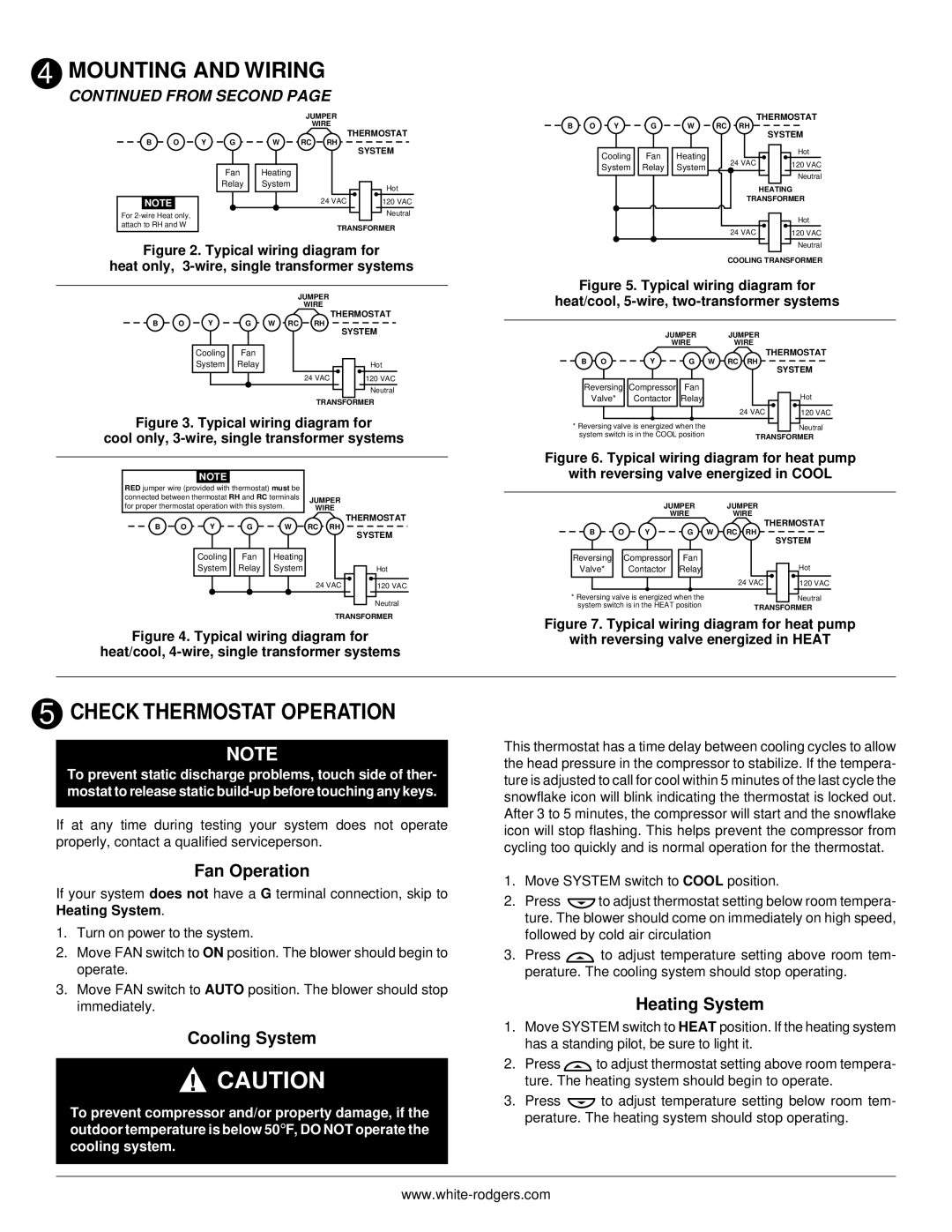1F78 specifications
The White Rodgers 1F78 is a versatile and advanced smart thermostat designed to provide homeowners with optimal control over their heating and cooling systems. As energy efficiency becomes increasingly crucial, the 1F78 incorporates a range of features and technologies that cater to modern comfort needs.One of the standout characteristics of the White Rodgers 1F78 is its user-friendly interface. The large, backlit display makes it easy to read and navigate, even in low-light conditions. The intuitive controls allow users to set temperature preferences quickly, making adjustments to their comfort levels effortless.
This thermostat is equipped with programmable capabilities, allowing users to set schedules for different days of the week. Homeowners can program the 1F78 to lower temperatures when the house is empty during the day and increase them before they return home. This feature not only enhances convenience but also contributes to significant energy savings over time.
The technology behind the White Rodgers 1F78 includes advanced temperature sensors that ensure accurate readings, leading to efficient temperature regulation. This ensures that the heating and cooling systems only operate when necessary, minimizing energy consumption and costs.
Moreover, the 1F78 is compatible with multiple HVAC systems, including gas, electric, and heat pump systems, making it an ideal choice for various home setups. Its versatility extends to Wi-Fi connectivity, allowing users to monitor and adjust their home's temperature remotely via a smartphone or tablet app. This capability provides homeowners with the convenience of controlling their thermostat from virtually anywhere.
Additionally, the White Rodgers 1F78 features a smart recovery function that learns how long it takes to reach the desired temperature and adjusts the start time accordingly. This ensures that rooms reach the set temperature by the scheduled time without unnecessary overworking of the HVAC system.
In summary, the White Rodgers 1F78 thermostat stands out for its programmable nature, user-friendly interface, compatibility with various HVAC systems, and advanced technologies that optimize energy usage. With its focus on comfort and efficiency, it presents a compelling option for homeowners seeking to enhance their home environment while reducing energy costs.

